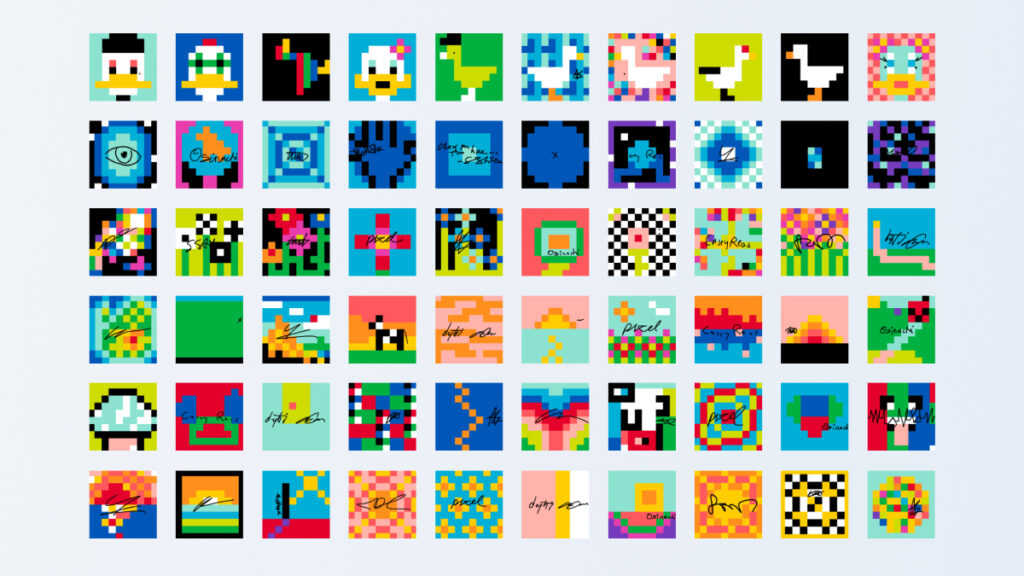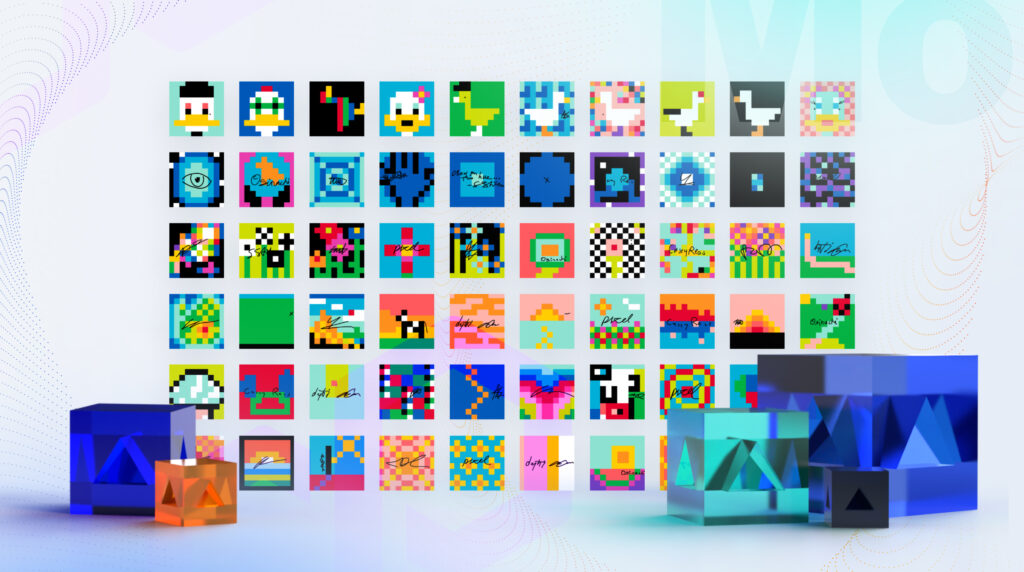Web3 continues to grow at a rapid rate, with some estimates showing over 800% growth within the space since 2021. Despite a prolonged crypto winter, organizations across the globe are catching onto Web3’s myriad applications and utilizing this technology to launch new, innovative products and services.
Many prominent brands outside of the crypto space have launched exciting Web3 projects in recent months, such as Starbucks (with the Odyssey program), Nubank (with Nucoin), Nike (with RTFKT), and MoMA, New York’s Museum of Modern Art, with the new MoMA Postcard.
In light of these developments and more, Fireblocks Senior Director of BD, Web3, Sergio Silva sat down with Madeleine Pierpont, Web3 Associate at MoMA, and Manuel Echanove Puig, Head of Business Development at Polygon, to discuss these high-profile product launches, the current state of Web3, and what the future holds.
Read on for a summary of the conversation, or watch the on-demand webinar “Exploring Web3 Use Cases for Brands & Corporates with the MoMA and Polygon”.
Sergio: MoMA is one of the most respected art institutions in the world. How and why did MoMA start thinking about Web3?
Madeleine: Since its founding, MoMA has always been interested in new ideas and engaging with what is at the forefront of contemporary culture. As blockchain is an innovation and Web3 is a new, emergent concept, engaging with the ecosystem, the tech, and the art is actually quite aligned with the museum’s mission.
The museum launched its first blockchain initiative in 2021 with the exhibition and sale of Refik Anadol’s Unsupervised. That was really exciting, in part, because the museum was engaging with a totally new audience segment.
Since then, we have been exploring blockchain across different verticals. We are still in a stage of experimentation and learning. We want to understand how we can best engage with blockchain from an infrastructural perspective, as well as how to support blockchain-based art and artists working at this intersection.
Sergio: Manuel, since you work with many major brands, I’d like to revisit what Madeleine said about experimenting. What are you seeing regarding how brands evaluate and utilize Web3?
Manuel: Since we started as a company six years ago, we have seen a strong evolution in how brands adopt these new technologies.
A couple of years ago, it was just a curiosity. Today, brands are looking to see if Web3 can affect their business. We have passed the moment when Web3 conversations were relegated to innovation teams. Now, we are seeing many companies launch in-house, dedicated teams that are specifically tackling the best use of blockchain for their business and community.
Sergio: Curiosity and exploration are what I hear from both of you, which is very exciting.
You mentioned that we’ve gone from that initial exploratory stage to more concrete actions. Can you talk about one or two organizations you’ve worked on with the Polygon team? How are brands actually getting started working in Web3 once they’ve gotten through that exploratory phase?
Manuel: The first use case I’m eager to dive into is Nubank.
Nubank is one of the biggest digital neo-banks in Brazil. They have over 85 million customers. We helped them to develop a loyalty program called Nucoin, which 13 million customers already use at Nubank.
Users can earn Nucoin based on their banking actions and use it in several different ways. You can stake Nucoin to earn more of it. Nucoin also gets you perks and benefits; some are linked to internal bank operations, and others link to the ecosystem of partners Nubank is working with. This increases how long customers stick with the bank and drives a sense of community.
The second one is the Nike and RTFKT program. This program offers a link between physical objects and data objects in a really unique way using NFT technology. This empowers future connections with, for example, the gaming world. You now have playable assets that are owned by customers. Imagine playing Fortnite with a digital version of some sneakers that you bought from Nike.
Sergio: This all speaks to how Web3 is a very different ecosystem outside of the borders of the U.S. Nubank is a gigantic, well-funded financial institution. Its investors include Warren Buffett, Berkshire Hathaway, and others. The fact that they are investing in Web3 speaks greatly for the future of the space.
Madeleine, I’m really excited about the Postcard project MoMA launched. Can you please give us a description of what the project is and how it works?

Madeleine: MoMA Postcard is a global community project and an experiment in collective creativity on blockchain. The initiative acts as a platform for collaboration, learning and connection around fundamental blockchain principles.
To quickly describe how it works, each Postcard acts like a digital chain letter that is co-created and co-owned by 15 people. If I start a blank postcard, I stamp it, confirm my stamp on the blockchain and then become an owner of that card. I can then choose to send it to whomever I want around the world. So, say, Sergio, I sent it to you, you would then be added as a co-owner and a co-creator of that card. Then you can stamp that card, and send it over to Manuel, who would then become a third co-owner.
The idea is to foster connectivity and to do so in an accessible way. Each postcard acts as a micro-community within the broader, global context of the project. We hope it can also serve as a bridge in between communities that know very little about blockchain and those that are heavily involved in the space.
Sergio: I’m a big fan; I got a bunch of Postcards. I’m sure there was education that the Web3 team had to do at MoMA to get this through. What advice would you give to brands who are navigating through that internal approval process to launch a Web3 initiative?
Madeleine: It’s hard to give advice to other institutions or organizations because every organization operates in its own way. Generally speaking, blockchain can be confusing and daunting. There is still a massive barrier to entry, which is just as much about learning resources as it is about improved onboarding systems. When I chat with people who are not as well-versed in the technology, I try to meet them where they are in terms of their interests, their understanding, and perhaps even their fears. We need to create a space where people feel comfortable starting to have more of that dialogue.
It has been amazing to work with the Working Web3 Group, which is made up of colleagues from different areas across the museum. It is exciting to consider where we can go and what we can do with this new technology.
It’s been a fantastic journey. MoMA Postcard is an exciting next step and there’s definitely more to come.
Sergio: Manuel, Polygon has been instrumental in many Web3 initiatives from iconic brands, such as Nike, Nubank, and Starbucks.
Madeleine spoke about helping teams internally understand the technology better. How are you seeing this from your perspective, and what resources do you guys provide to your clients in this process? Give me the other side of the coin.
Manuel: There are a number of questions we tend to ask. One is, “Why blockchain?”. This looks like an obvious question, but you can’t imagine the number of times that some initial ideas inside deep corporations have pivoted just because we asked this question. “Does everything need to be on-chain? Can you have things that are off-chain?”.
Answering those questions is super important. That also gets tied with, “How does this, if you’re a for-profit company, either increase your revenues or reduce your costs?”. If you are a nonprofit company, “How does this improve your operations or your day-to-day?”.
Sergio: I’d love to ask how you see Web3 evolving, say a decade from today. Do you expect mainstream adoption?
Madeleine: To me, blockchain-based art is some of the most exciting contemporary art that exists today. The museum really understands and recognizes that blockchain is being used as a new medium. It’s a new way by which to buy and sell art, but it’s also an entirely new mode of art creation. Right now it’s a matter of dialogue and thoughtful engagement. As museums further explore blockchain as a medium, I believe we will only start to see more around the globe in terms of programming, events and exhibitions.
That being said, it is difficult to know exactly where all of this is going. This ecosystem moves so quickly. The technology is so nascent. It’s hard to even predict where it will be two years from now, let alone ten years. MoMA is engaging robustly in this space, and I am really excited for the year ahead.
Sergio: Same question for you, Manuel. Ten years down the line, where do you see Web3? Where do you see the Polycom ecosystem going?
Manuel: Our vision here is what we like to call Volume 2.0. We’re trying to create the value layer of the internet. Web2 allows a basic exchange of information. We believe that we need that infrastructure that allows the exchange of value, which can only be authenticated, showcased, and easily transferred transparently – through blockchain. That’s Volume 2.0.
Fireblocks enables brands and corporate entities worldwide to create innovative Web3 projects and initiatives. To learn more about how Fireblocks can help your team get involved in the next generation of the Internet, review our Web3 whitepaper for everything you need to know, or watch the full webinar with MoMA and Polygon on demand here.



